 Laura Davidson |
O’Dwyer’s met with Laura Davidson, President of LDPR, and their digital agency partner, Kim Zebor, Director of Social Media of Thin Pig Media, to discuss the present state and future of social media.
Q: Social media celebrates its 10th birthday this year. What’s changed?
LD: It’s not a little kid anymore. Just like any other hyperactive ten-year-old, social media is moving ever faster, constantly picking up new skills and yes, even skinning its knees occasionally. And like a good caregiver, PR agencies must be vigilant, looking out both for new opportunities to engage and dangers to avoid.
In the beginning the social networks were just what they sound like, a place for friends to gather and share (Six Degrees, My Space, etc.). They connected people. Today, social media is still based on online communities but now it has grown up, left the eddy and joined the mainstream. In a single decade it has turned the telephone into a relic. Traditional media is running scared. And everyone you need to reach is right there waiting … mostly for free. Of course, it’s not just “social” any more. It’s an immense marketplace where we go to do business, market products, promote brands, connect to current customers and foster new ones. We use it for CRM, advertising, growing databases and yes, word of mouth third-party endorsement.
 Kim Zebor |
Q: In a nutshell, describe the different strengths/purposes of the top social players?
KZ: Facebook is the aging giant in the room, with nearly two billion users. It can deliver extraordinary results if you have great short video content, or the ability to go live, or post personable videos. It’s also a great advertising platform for reaching highly targeted individuals both on its site or on other sites as part of its audience network.
Instagram is the right choice if you have an eye-catching/visually arresting product. The emphasis is more on the catchy image than catchy copy. Use it to create visual “stories” to showcase live events or capture “right now” moments.
Twitter’s strength is driving traffic to your website. 47 percent of people who visit a Twitter profile also visit the website linked to that profile. It also works well for customer service opportunities and event engagement.
Snapchat is the best way to engage the younger generation: 71 percent of its users are under 34 years old. While small businesses can find it difficult to gain traction, larger brands can leverage their advertising budgets to reach the younger demo.
Q: Why is social media so important in today’s PR mix? What does it do that traditional PR can’t?
KZ: The data says it all. Almost half (49 percent, according to AdWeek) of today’s consumers rely on product recommendations from influencers to inform their next purchase. That explains why a social media/influencer marketing program has morphed from an add-on to one of the most important tools in the marketing toolbox.
|
|
Social media’s power in the PR mix stems from its virality. Messages spread through social media are like meteors flying through space. There is nothing to impede their reach, no circulation numbers, reader demographics, publication dates, or shelf lives to slow them down. They reach huge, often new and unintended audiences and they travel so fast they can have an immediate effect.
The messaging pushed out on a social media channel should align as closely as possible to the messaging pushed out for PR pitches and other marketing efforts.
Q: Tell us about influencers. How do they fit in?
LD: Influencers are just another branch on the media tree. As with the more traditional offshoots (journalists and editors), PR success depends on nurturing close, mutually beneficial relationships. In many cases, to engage with one influencer is to engage with many. They have their own networks and often specify others with whom they like to travel. An added bonus: sometimes they bring other brands into the marketing mix, creating interesting partnerships. For example, in a recent campaign for the Watch Hill Inn, our client in Rhode Island, an influencer helped LDPR involve the American clothing retailer, Anthropologie.
Q: Can you give us a couple of examples of how LDPR works with influencers?
LD: Our LDPR in-house social media team works closely with our affiliate partner Thin Pig Media to identify and measure influencer programs.
Our luxury luggage client, Briggs & Riley, needed content to launch and maintain their social media profiles, but didn’t have the lifestyle assets to compete. So LDPR established a campaign surrounding modern business travelers (photographers, chefs, etc.) that would generate content/photography and video assets that Briggs & Riley could use for their marketing and sales needs. We secured photographer James Relfdyer (@Jamesrelfdyer, 297,000 followers) to produce 15 stock images, in addition to his three posts on Instagram, that Briggs & Riley used for a year to promote the brand and reach new audiences.
Ocean House (Watch Hill, RI) wanted to generate lifestyle media coverage and attract the local community to come in and enjoy their F&B offerings. So, it partnered with the Champagne house, Veuve Clicquot, and launched an outdoor “Secret Garden” for the summer. To back up the initiative with real-time buzz, LDPR coordinated an influencer trip with local Insta-stars. The result: we reached millions of followers and the Ocean House sold enough Champagne to fill a swimming pool.
Q: What social media measurements does LDPR use?
LD: Historically that was the big complaint leveled against social media. It couldn’t show concrete results. Now that’s all changed. At LDPR we use a range of sophisticated metrics to determine ROI including:
Engagement: When an influencer travels to one of our clients, we track engagement on their posts (likes, comments, shares) and growth on the client’s channels throughout the life of the campaign.
Click-throughs: Often we give influencers a click-through link to use (it can take the form of a Bitly link, or can be created in-house by the client). We then measure how many times the link was used and link conversion (how many times the link ended in a sale). For the latter, we work hand-in-hand with the in-house team.
Hashtag impressions: Using tracking tools from Rival IQ and Hashtracking, we are able to measure the impact of a hashtag (this is important, as many of our clients create a dedicated hashtag to stand out in the digital space). We measure both how and how many times the hashtag was used.
Additional services: While harder to quantify, this measurement is equally important. What else do influencers bring to the table? It might be a partnership. They might host an event or workshop designed to attract guests. Or they might provide image assets for future social media and marketing use.
Q: Give us three predictions for the future.
KZ: Consumers will demand high levels of customer service on social media platforms with quick responses. The number of mobile phone users in the world will pass the five billion mark by 2019. With more and more people using mobile phones, companies will have to have excellent mobile experiences. Micro-influencers will grow in importance. Why? Less expensive and more engaged/targeted audiences.

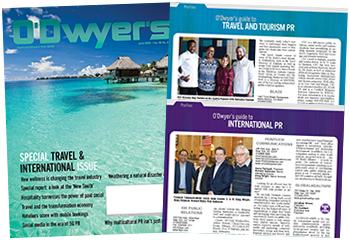

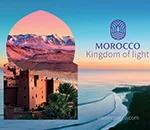 Weber Shandwick is providing PR and marketing communications services to the Moroccan National Tourist Office in New York.
Weber Shandwick is providing PR and marketing communications services to the Moroccan National Tourist Office in New York.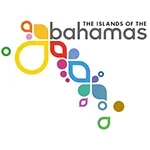 Finn Partners has filed its six-month contract with the Bahamas Ministry of Tourism, Investments & Aviation, which is worth $240K.
Finn Partners has filed its six-month contract with the Bahamas Ministry of Tourism, Investments & Aviation, which is worth $240K.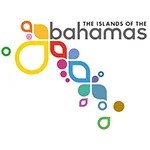 Weber Shandwick wrapped up its work for the Ministry of Bahamas at the end of 2023.
Weber Shandwick wrapped up its work for the Ministry of Bahamas at the end of 2023.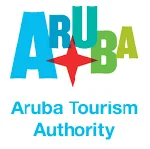 The Aruba Tourism Authority is boosting its budget 29.4 percent to $2.2M at Zeno Group, according to its 2024 contract, effective Jan. 1.
The Aruba Tourism Authority is boosting its budget 29.4 percent to $2.2M at Zeno Group, according to its 2024 contract, effective Jan. 1. As inflation continues to impact spending, consumers are revisiting their list of what they’re willing to spend more of their money on. Luckily for those in the travel industry, experiences seem to be trending up on the “splurge” list.
As inflation continues to impact spending, consumers are revisiting their list of what they’re willing to spend more of their money on. Luckily for those in the travel industry, experiences seem to be trending up on the “splurge” list. 


 Have a comment? Send it to
Have a comment? Send it to 
No comments have been submitted for this story yet.